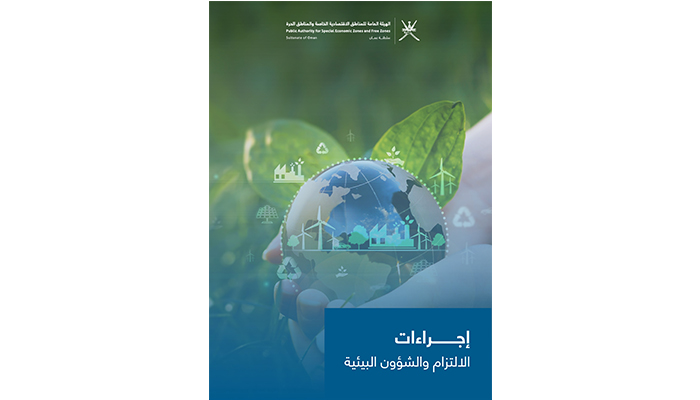
Muscat: The Public Authority for Special Economic Zones and Free Zones (Opaz) published a handbook on environmental affairs and compliance processes. It seeks to distinctly outline the authority's responsibilities with respect to environmental matters concerning the zones it oversees and the projects that are undertaken there.
The guide aims also to streamline and standardise environmental procedures on projects throughout the zones in order to guarantee that they adhere to the laws, rules, policies, and guidelines that govern them as well as the application of best practices pertaining to environmental sustainability, risk assessment, security, occupational health and safety, and investment environments.
The purpose of the guide, according to Engineer Ahmed bin Harib Al-Balushi, Director of the Authority's Compliance and Environmental Affairs Department, is to make it easier for the department's specialists to track procedures in the zones they oversee and within Opaz. This will increase productivity, guarantee that environmental procedures are followed on projects, and save time and effort.
The environmental procedures and supervisory framework issued by the Authority's decision No. (37/2023) are included in the guide, Al-Balushi added. This decision outlines the roles and responsibilities of the Authority and the zones with regard to environmental studies, the issuance of environmental permits, environmental monitoring, and periodic reports, as well as compliance procedures in the environmental field for projects.
An information and data form about compliance in the areas of risk assessment, environmental management, occupational health and safety, and security aspects is included in the guide to help create a record of all the information related to environmental aspects in the zones under the Authority's supervision.
Opaz is creating a framework for cooperation, coordination, and unification of efforts between the authority and the administrations of the zones it manages in order to ensure environmental safety, increase production capacity, and progress the production process—all of which improve the standard and expertise of work. It is noteworthy that the Authority seeks to standardize environmental tasks and responsibilities related to compliance and environmental issues in order to establish a common strategy for regulatory and supervisory work.